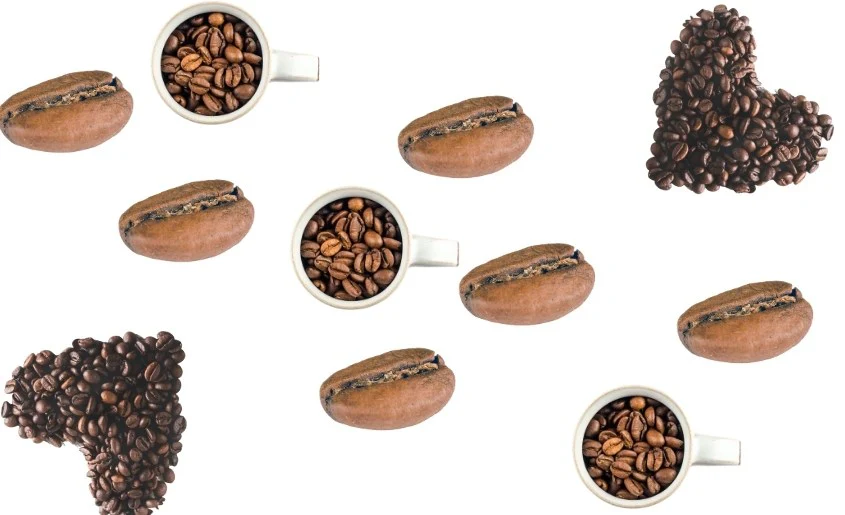
The art of coffee, your normal fix is a unique little something that you anticipate each day, evening, or some other season of day. Furthermore, with such countless boundaries influencing the amount you get to partake in your espresso, many individuals think about making a decent shot of coffee a craftsmanship in itself.
In the event that you like your espresso with milk, you probably go over an alternate sort of workmanship: latte craftsmanship - the captivating examples made in the froth beating your coffee drink. At any point considered how to make latte workmanship in your own kitchen?
Baristas guarantee that there are two critical elements for making an incredible mug of latte: a new shot of coffee with a sufficient measure of crema and appropriately finished steamed milk. The justification for why you can't make latte by essentially adding customary milk to espresso has to do with both science and physical science.

To make the 'microfoam' that is immersed your cup, baristas normally add steam to milk and afterward quickly heat it. This logical cycle is designated "denaturing" as it made the actual properties of milk be changed. Milk is basically made out of sugar, fat, and proteins. At the point when it is steamed, the fat and the sugars in the milk separate into more modest, less complex sugars that make the milk better.
When your finished steamed milk is prepared, the subsequent stage is emptying it into some coffee, which includes a few physical science. The barista pours the steamed milk so that the milk depletes first and gets done with the froth to make the plan. Looking for the art of coffee cafe in florida?
Other Mistakes People Make When Making Coffee Art
Other than adding standard milk to ordinary espresso, there are a couple of different slip-ups that fledglings make while pouring latte workmanship, as:
Pouring the milk too leisurely: This makes the milk separate in the pitcher, bringing about less-circulated air through milk filling the refreshment and more-circulated air through milk staying in the pitcher. This makes pouring latte craftsmanship troublesome, yet in addition gives you an under-circulated air through drink.
Lifting the pitcher away from the refreshment surface while pouring: When you raise the pitcher away from the outer layer of the drink, it makes the milk plunge into the crema as opposed to laying on top of the crema to frame your craft. Need to more information about coffee mug clip art 2024.
Keeping the spout of the pitcher excessively near the drink surface: This makes the contrary difference, as the milk will in general skim the outer layer of the refreshment, so it doesn't make an example. Thus, now that you know the vital parts of pouring to make great latte workmanship (level, position, stream) you can attempt to pour your own cup.
1: Making the Perfect Foam
To start with, you really want to pour sufficient virus milk (at 1C or 34F) for one cup into your steam pitcher. The following are a couple of tips to do this. Place the pitcher in your cooler or fridge for around 30 minutes prior to utilizing.
A chilly pitcher will permit you additional opportunity to steam the milk, which will lessen the gamble of singing. This step will likewise make the cream stiffer and more straightforward to deal with.

Utilize a fluid thermometer to assist you with knowing when to eliminate the milk from the liner to abstain from singing. You ought to attempt to warm the cream to simply underneath bubbling for a particular measure of time. Standing by too lengthy will cause burning.
Turn on the Steam
Second, put the steam wand at the lower part of the pitcher, turn on the steam, and raise the wand gradually until it is near the tip of the milk.
As the milk keeps on rising, bring down the pitcher so the steam wand stays around 1 cm away from the tip of the milk. Try not to let the milk overextend or shape any large air pockets. This is critical to make smooth, smooth milk as opposed to the froth that rests on coffee mug clip art.
Turn the Milk
Third, let the milk reach 37C or 100F and place the steam wand profound into the milk, ideally on the pitcher, with the end goal that the pitcher can turn counterclockwise. Turn the milk gently counter-clockwise while the steam wand stays close to the lower part of the pitcher.
Turn on the Steam
Fourth, keep up with the movement until the milk warms to somewhere in the range of 65C and 68C (150F and 155F), and don't allow the frothed milk to reach 71C (160F). Make a point to. Watch the propensity of your liner and change fittingly.
A few liners heat the milk so quick that you want to eliminate the milk from the liner around 10F before it arrives at the cutoff to hold it back from singing. Hold back nothing, bubbles alluded to as microfoam, instead of huge air pockets. The goal is to acquire light froth without settling on the body.
2: Pulling the Espresso
You ought to begin running the shots when you froth your milk. Each shot of coffee ought to contain somewhere in the range of 7 and 8 grams of ground coffee. Utilize 30 - 40 lbs of strain to pack down on the portafilter.
You can take a stab at pushing down on a restroom scale to decide how much power you want to apply prior to going to the portafilter. In any case, for most grown-ups, this is probably however much power that you can oversee while pushing down on one hand. For additional newness, think about utilizing a burr processor, as it allows you to control how fine/coarse the coffee grinds become.

Then, pull the coffee shots. The ideal shot ought to have a little cream in it, as well as the regular espresso flavor. Here are a few hints. The ideal shot is pulled inside 21-24 seconds. The coffee will in general be better when pulled near 24 seconds.
How much strength applied while packing down on the coffee grounds straightforwardly influences the length of the extraction. Apply barely sufficient power so the coffee separates gradually and uniformly. Looking for the best Coffee Bean Art in florida?
In the event that you don't utilize enough packing pressure, the coffee will extricate excessively quick. After this, you can empty your coffee shots into an espresso cup or other compartment with a loud mouth. Try not to allow the shot to sit for over 10 seconds prior to adding milk.
3: Pouring the Milk and Espresso Art
As referenced previously, you should be aware of the level, position, and stream while pouring your steamed milk. The following are a couple of tips. Begin the pour somewhat high until the cup is almost half full, and afterward bring down the pour so it's near the crema to make the froth show up.

Move from high to low and try to pour at a consistent speed. Hold the cup at a point and pour consistently. Pouring too quick will split the crema up while pouring too sluggish will make the froth be abandoned. At the point when the cup is almost half full, begin pouring to the rear of the cup, moving the pitcher from one side to another utilizing delicate wrist development.














